(1847 products available)
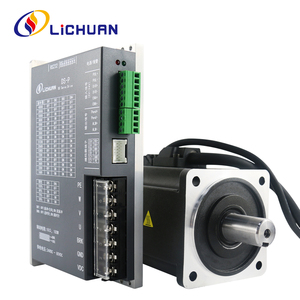



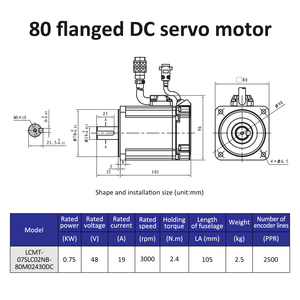







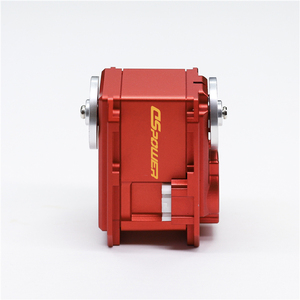
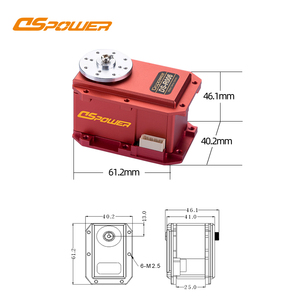












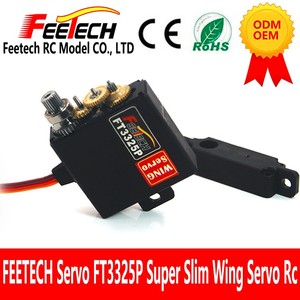
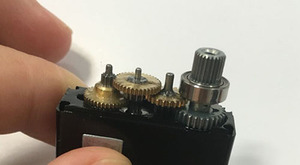








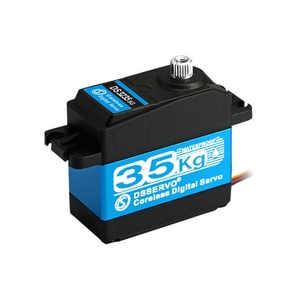



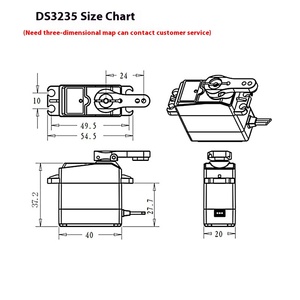























































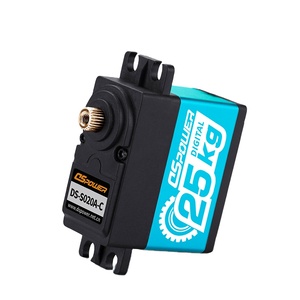
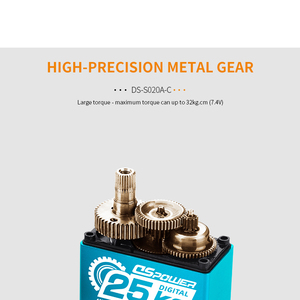
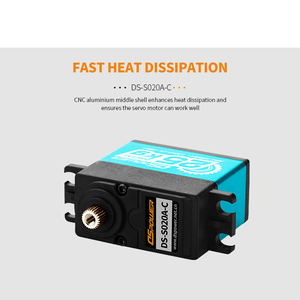

















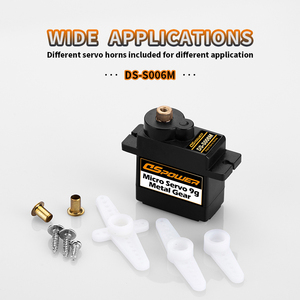












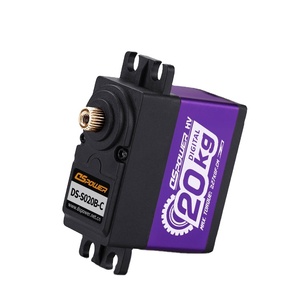




























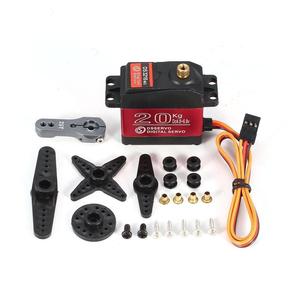





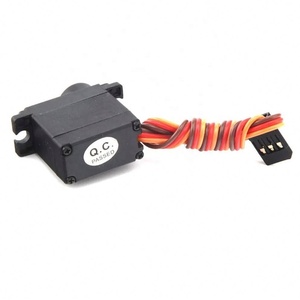
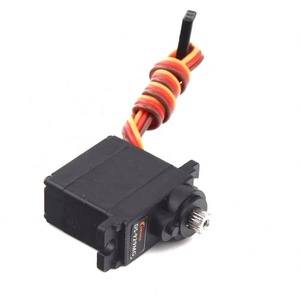













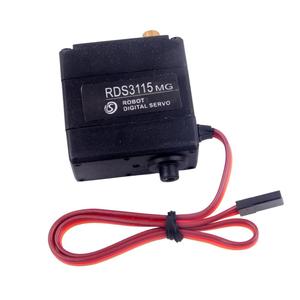


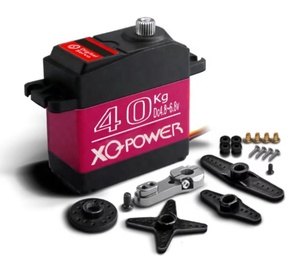
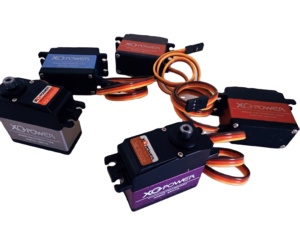
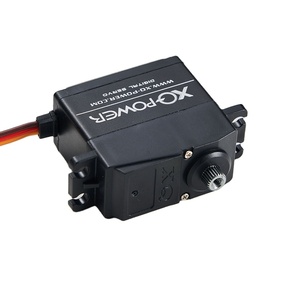
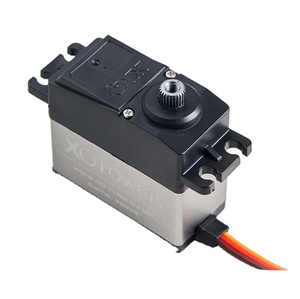




















There are three common types of DS servo, each with unique characteristics and functionalities:
Digital Servo
Digital servos have microprocessors that help in processing the incoming signals. This makes the digital servos more accurate and faster when it comes to positioning. The presence of a microprocessor in the digital servos helps in providing better control over the movement and the position of the digital servos. This also ensures consistency in their performance.
Mini Servo
The size of the mini servos is smaller and more compact when compared to the other types of servos. These mini servos are used in applications that require less power and torque. The mini servos can easily be mounted on small devices such as toys, robots and cameras.
Torque servo
Torque servos are focused on delivering high amounts of power. These servos are able to move big loads with ease. This makes them ideal for applications such as cranes, industrial machines and robotic arms.
When choosing a ds servo for a project, several factors need to be considered to ensure that the selected servo meets the requirements and performs optimally. These factors include compatibility, torque, speed, precision, range of motion, power supply, durability, and cost.
Compatibility
It is important to ensure that the servo is compatible with the control system and the other components of the system. This includes compatibility with the voltage levels, communication protocols, and physical connectors. Additionally, the servo should be compatible with the specific application it is being used for.
Torque
Torque is a measure of how much rotational force the servo can produce. It is crucial to select a servo with adequate torque to handle the load it will be driving. The required torque will depend on factors such as the weight of the load, the friction in the system, and the acceleration needed.
Speed
The speed of the servo determines how quickly it can move to its desired position. This can be a critical factor in applications that require fast response times. The speed of the servo is typically specified in degrees per second or revolutions per minute (RPM).
There should be a balance between speed and precision. In some applications, a slower speed may be acceptable if it allows for greater accuracy. The desired level of precision should be considered when selecting a servo.
Range of motion
The range of motion of the servo refers to the extent of its movement. It can be continuous or limited to a specific angle. The application requirements will determine the required range of motion. Power supply is another important factor to consider. The servo may require a specific voltage and current to operate.
Durability
The durability of the servo is important, especially in applications that involve continuous use or harsh conditions. It is important to consider the materials used in the construction of the servo as well as its protection against dust, moisture, and other environmental factors.
Cost
The cost of the servo is an important consideration. Typically, the price of the servo is determined by its features, performance, and quality. It is crucial to find a servo that provides the best value for the investment.
DS servo motors have various functions, features, and designs that make them suitable for different applications. One key functionality of these devices is their ability to provide precise control over position, velocity, and acceleration. This is achieved through closed-loop feedback systems that continuously monitor the motor's performance and make real-time adjustments. This ensures that it attains the desired output, thus minimizing errors and improving overall system efficiency.
Additionally, DS servo motors are known for their high torque output, both static and dynamic. This enables them to handle heavy loads and accelerate quickly without compromising on performance. The torque is often enhanced by the use of high-quality gears and advanced motor technologies such as brushless DC (BLDC) or stepper motors. Moreover, DS servo motors can operate smoothly and quietly, making them ideal for applications where noise levels need to be kept to a minimum.
DS servo motors also have a wide range of applications across various industries. In robotics, they are used to control the movement of arms, legs, and wheels with high precision. Similarly, in automation and manufacturing, DS servo motors are employed for conveyor belts, assembly lines, and packaging machinery to ensure accurate and efficient operations. In the automotive industry, they are used for steering systems, throttle control, and other critical functions that require precise control.
Regarding features, DS servo motors are compact and lightweight, making them suitable for applications with limited space or weight restrictions. They are also designed to be robust and durable, with the ability to withstand harsh environmental conditions such as high temperatures, dust, and moisture. This ensures that they can operate reliably in challenging conditions without causing breakdowns or malfunctions.
The design of DS servo motors can be customized to meet specific requirements. This includes the use of different types of sensors such as encoders, resolvers, or tachometers, which provide varying levels of accuracy and feedback. The motor's housing and mounting options can also be tailored to fit different installation spaces and configurations. Additionally, the control systems used in DS servo motors can be programmed and configured to perform specific functions and tasks, allowing for flexibility and adaptability to different needs.
Ensuring the safety of a Digital Micro Servo motor involves various measures to protect both the device and the user. Here are some key safety features and considerations:
Overload Protection
Incorporating current limiters or fuses within the servo motor can prevent damage due to excessive current flow caused by overloading or short circuits.
Temperature Control
Built-in thermal sensors that shut down the motor when it reaches dangerous temperatures help to avoid fires and damage. Also, designing the servo with materials that can withstand high temperatures ensures longevity and safety.
Water and Dust Ingress Protection
Servos with IP ratings are suitable for use in wet and dusty conditions. This is because the rating indicates the level of protection against water and dust ingress.
Quality of Materials
The servo motor should be made from high-quality, durable materials that can withstand mechanical stress and heat without deteriorating or becoming hazardous.
Compliance with Standards
Manufacturers should adhere to electrical and mechanical safety standards set by organizations such as the International Electrotechnical Commission (IEC) or the American National Standards Institute (ANSI).
Digital Micro Servo motors are compact devices that are widely used in various applications, such as robotics, RC vehicles, and automation. Here are some quality features, specifications, and considerations for digital micro servo motors:
Size and Weight
Micro servos are smaller and lighter than standard servos. They provide an excellent power-to-weight ratio, making them suitable for applications with limited space and weight constraints.
Position Control
Micro servos allow accurate position control over a short range of motion. They are ideal for applications that require precise positioning, such as camera gimbals, model vehicles, and robotic arms.
Speed and Torque
Speed refers to how fast the servo can move its horn to the desired position. Torque is the amount of power needed to rotate the motor shaft. Both speed and torque depend on the voltage applied and the gear ratio. Usually, a higher voltage gives better speed and torque. Additionally, the gear ratio determines the balance between speed and torque. A higher gear ratio gives more torque but less speed, while a lower gear ratio gives more speed but less torque.
Gear Type
The gear type affects the durability, noise level, and performance of the servo. Metal gears are more durable and precise but make more noise. Plastic gears are quieter but wear out faster. Hybrid gears have a mix of metal and plastic for better durability and performance.
Feedback System
A feedback system is essential for servo accuracy and consistency. It helps to correct any deviation from the desired position by monitoring the output and adjusting it accordingly. The digital micro servo has an electronic feedback system that uses a microcontroller to process the signals and control the motor. This system improves the reliability and responsiveness of the servo.
Q1. How can buyers ensure the quality of the DS servo?
A1. Buyers can ensure the quality of the DS servo by sourcing from reputable manufacturers, checking certifications, and reading reviews from other buyers.
Q2. What are the common applications of DS servos?
A2. Some common applications of DS servos include robotics, automation, CNC machinery, and 3D printers.
Q3. How to maintain DS servos for longevity?
A3. To maintain DS servos, keep them clean, lubricate regularly, and ensure proper installation to prevent damage from excessive force or heat.
Q4. What is the typical lifespan of a DS servo?
A4. The lifespan of a DS servo depends on usage and maintenance. Some can last several years if well taken care of.
Q5. What is the role of feedback systems in DS servos?
A5. Feedback systems in DS servos are important for precise position control, as they allow real-time monitoring of the servo's position.